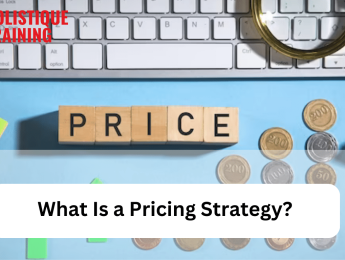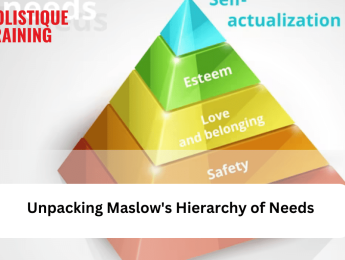- Table of Contents
- Introduction
- What Is a Pricing Strategy?
- Types of Pricing Strategies
- 1. Cost-Plus Pricing
- 2. Value-Based Pricing
- 3. Competitive Pricing
- 4. Dynamic Pricing
- 5. Penetration Pricing
- The Importance of Having a Good Pricing Strategy in Place
- Revenue Maximisation
- Competitive Advantage
- Brand Perception
- Flexibility and Adaptability
- Customer Segmentation
- Strategic Decision-Making
- Customer Loyalty
- How to Create a Winning Pricing Strategy
- 1. Market Research
- 2. Determine Cost Structure
- 3. Segment Your Customers
- 4. Value Proposition and Differentiation
- 5. Psychological Pricing
- 6. Monitor and Optimise
- 7. Promotions and Discounts
- 8. Experimentation and A/B Testing
- 9. Competitive Analysis
- 10. Feedback Loops
- Which Strategy Best Suits Your Business?
- 1. New Product Launch
- 2. Premium Products or Services
- 3. Competitive Markets
- 4. Diverse Product Lines
- 5. Niche Markets
- 6. Seasonal or Limited-Time Offers
- 7. Subscription-Based Services
- Ethical Pricing and Corporate Social Responsibility
- Transparency and Fairness
- Social and Environmental Responsibility
- Product Quality and Safety
- Avoiding Price Gouging
- Contributing to Local Communities
- Customer Engagement and Education
- Employee Well-being
- Long-Term Sustainability
- Conclusion
Introduction
Pricing strategies are critical components of any business model, as they directly impact revenue and profitability. A well-designed pricing strategy can significantly influence customer behaviour, market positioning, and overall business success. In this blog post, we will delve into the concept of pricing strategies, explore various types of pricing strategies, emphasise the importance of having a robust pricing strategy, and offer practical steps to create a winning pricing strategy that aligns with your business objectives.
What Is a Pricing Strategy?
At its core, a pricing strategy is a systematic approach that businesses use to set the prices of their products or services. It involves making deliberate decisions on how much to charge for offerings, considering factors such as production costs, market demand, competition, and the value perceived by customers.
Types of Pricing Strategies
To achieve a comprehensive understanding of pricing strategies and make informed decisions, let's delve into various types of pricing strategies commonly employed by businesses worldwide:
1. Cost-Plus Pricing
Cost-plus pricing, a fundamental approach, involves meticulous accounting. Businesses calculate the total production cost, encompassing raw materials, labour, overheads, and operational expenses. To ensure profitability, a predetermined profit margin is added to the production cost, giving birth to the final selling price. While this method provides a safety net, guaranteeing a profit with every sale, it often overlooks market dynamics and customer willingness to pay. Businesses utilising cost-plus pricing risk missing opportunities to maximise revenue and customer loyalty.
2. Value-Based Pricing
Value-based pricing is an artful dance between customer perception and business profitability. Here, prices are set based on the perceived value of the product or service to the customer. Businesses meticulously analyse what customers are willing to pay for the unique benefits, experiences, and solutions their offerings provide. This strategy demands an in-depth understanding of customer behaviour, market research, and an acute awareness of the value propositions that distinguish the product. When executed well, value-based pricing allows businesses to capture a premium for their products, bolstering both revenue and brand image.
3. Competitive Pricing
Competitive pricing operates on the principle of equilibrium. In this strategy, businesses meticulously study the prevailing market rates and set their prices in alignment. By mirroring competitors' pricing structures, businesses aim to remain competitive, preventing customer migration to rivals offering similar products at lower prices. However, this approach demands constant vigilance. While competitive pricing prevents immediate customer loss due to inflated prices, businesses must emphasise other differentiators—exceptional service, innovative features, or unique selling points—to escape the pitfall of becoming a commodity.
4. Dynamic Pricing
In the era of real-time data and digital connectivity, businesses leverage dynamic pricing to ride the waves of market fluctuations. This strategy involves adjusting prices on the fly, responding to variables such as demand spikes, time of day, seasonality, or customer segment preferences. Industries like travel and e-commerce harness dynamic pricing to optimise revenue streams. For instance, airlines might increase ticket prices during peak travel seasons, capitalising on high demand. E-commerce platforms might employ algorithm-driven pricing adjustments to maximise sales during flash sales or special events. Dynamic pricing demands sophisticated data analysis tools and algorithms, enabling businesses to anticipate market shifts and make timely price adjustments.
5. Penetration Pricing
Penetration pricing is akin to making a grand entrance. Businesses introduce products at a deliberately low price point, capturing attention and swiftly gaining market share. This approach is particularly effective for new products entering competitive markets or for businesses expanding into uncharted territories. The initial low prices serve as bait, enticing price-sensitive customers and early adopters. Once a substantial customer base is secured, businesses gradually increase prices, balancing profitability with market dominance. Penetration pricing, however, demands astute monitoring. While the low initial prices create a buzz, businesses must meticulously plan the price escalation to avoid customer backlash and maintain profitability.
These strategies form the cornerstone of a business's revenue model. However, the choice of strategy depends on a multitude of factors such as the industry, target market, product lifecycle, and competitive landscape. Understanding these strategies not only equips businesses to make informed decisions but also empowers them to adapt and innovate in the ever-evolving marketplace.
Table 1: Comparative pricing strategies in industries
The Importance of Having a Good Pricing Strategy in Place
Understanding the significance of having a well-designed pricing strategy in place is paramount for any business looking to thrive in a competitive marketplace. Let's now explore the compelling reasons why a strong pricing strategy is a fundamental pillar for revenue maximisation, brand positioning, and sustainable growth. By grasping the importance of pricing, you'll be better equipped to create a robust and successful pricing strategy for your business.
Revenue Maximisation
At its core, the primary goal of any business is revenue maximisation. A pricing strategy, meticulously designed, directly impacts a company’s revenue stream. By delving deep into customer behaviour, market dynamics, and willingness to pay, businesses can set optimal prices that strike the perfect balance between attractiveness to customers and profitability. Understanding what customers are willing to pay and aligning prices with these expectations can lead to a substantial increase in sales, thereby maximising revenue generation.
Competitive Advantage
In today’s hyper-competitive markets, differentiation is the key to survival. A thoughtfully crafted pricing strategy can transform a business into a beacon amid competitors. Premium pricing strategies, for instance, not only reflect the quality of a product but also create an aura of exclusivity. Value-added services coupled with strategic pricing can elevate a brand above its rivals. In contrast, competitive pricing ensures that a business remains in the race, preventing customers from drifting toward cheaper alternatives. The right pricing strategy, thus, becomes a potent tool for businesses to carve their niche and assert their dominance in the market.
Brand Perception
Pricing is not just a numerical figure; it’s a potent communicator of a brand’s identity. Premium pricing strategies create an aura of sophistication, hinting at superior quality and exclusive offerings. Conversely, discount pricing might attract bargain hunters but could risk diluting the brand’s value perception. Consistency in pricing, aligned with the brand’s core values, fosters trust and loyalty among customers. A well-defined pricing strategy ensures that the brand is perceived as reliable, trustworthy, and offering value for money, thereby shaping a positive brand image in the minds of consumers.
Flexibility and Adaptability
The business landscape is akin to a turbulent sea, with market conditions and customer preferences constantly shifting. A robust pricing strategy equips businesses with the agility to adapt swiftly to these changes. Whether it's responding to sudden market demands, accommodating seasonal fluctuations, or countering competitor moves, a flexible pricing strategy ensures that the business remains relevant. It allows for quick adjustments, enabling the company to remain competitive and responsive in dynamic market environments.
Customer Segmentation
Customers are not homogenous entities; their preferences, buying power, and sensitivity to price vary significantly. A well-thought-out pricing strategy enables businesses to segment their customer base effectively. By understanding the unique needs and value perceptions of different customer segments, businesses can tailor their pricing models to cater to these specific groups. This segmentation not only enhances customer satisfaction but also optimises revenue by offering tailored solutions at corresponding price points.
Strategic Decision-Making
A pricing strategy is not merely a short-term tactic; it's a guiding light for long-term business growth. Informed by market research, consumer behaviour analysis, and competitive insights, a well-designed pricing strategy empowers businesses to make strategicdecisions. It helps in product positioning, expansion planning, and investment allocation. By understanding the market’s response to various price points, businesses can make informed choices that impact their growth trajectory positively.
Customer Loyalty
Customer loyalty is the holy grail of business sustainability. A pricing strategy that resonates with customers not only attracts new business but also fosters loyalty among existing customers. When customers perceive that they are getting value for their money, they are more likely to return. Moreover, a consistent and transparent pricing policy builds trust, strengthening the customer-business relationship. Loyal customers not only become repeat buyers but also act as brand ambassadors, driving positive word-of-mouth referrals and further expanding the customer base.
In essence, a robust pricing strategy is not just a numerical exercise; it’s a strategic imperative that shapes a business’s trajectory. By understanding the nuances of market demand, customer behaviour, and the psychological aspects of pricing, businesses can create a pricing strategy that not only maximises revenue but also fosters a strong brand identity, ensures adaptability, and builds a loyal customer base. Thus, in the grand tapestry of business, the significance of a well-designed pricing strategy cannot be overstated—it’s the cornerstone upon which thriving enterprises are built.
How to Create a Winning Pricing Strategy
Designing an effective pricing strategy requires a thorough understanding of your business, target customers, and the market. Here are essential steps to help you develop a winning pricing strategy:
1. Market Research
Begin your pricing strategy journey with a deep dive into market research. Understand your target audience— their preferences, pain points, and most importantly, their price sensitivity. Analyse competitors meticulously: their pricing structures, unique selling propositions, and customer feedback. Market research serves as the compass, guiding your pricing decisions based on real-time market dynamics and consumer behaviour.
2. Determine Cost Structure
Numbers are the backbone of any pricing strategy. Calculate your production costs, including raw materials, labour, manufacturing, and overheads. Factor in operational expenses, marketing costs, and any other relevant expenditures tied to delivering your product or service. This comprehensive cost analysis forms the foundation upon which you’ll build your pricing structure, ensuring that your prices cover all expenses and leave room for profitability.
3. Segment Your Customers
Customers are not a homogenous group; they are diverse in their preferences, buying behaviours, and willingness to pay. Segment your customer base into distinct groups based on demographics, purchasing power, or psychographic factors. Each segment may have varying price sensitivities and perceptions of value. Tailoring your pricing strategies to each segment ensures that you optimise revenue by offering the right value proposition at the right price point.
4. Value Proposition and Differentiation
Clearly define your value proposition—what sets your product or service apart from the competition. Identify your unique selling points (USPs) and emphasise them in your pricing strategy. Whether it’s superior quality, innovative features, exceptional customer service, or a combination of these factors, your value proposition should justify the price you charge. Aligning your pricing with the value customers receive strengthens their confidence in choosing your offering over others in the market.
5. Psychological Pricing
Psychological pricing tactics delve into the intricate realm of consumer psychology. Strategies like setting prices just below a round number (e.g., $9.99 instead of $10) influence how customers perceive value. In fact, research conducted by scholars from MIT and the University of Chicago, as mentioned in an article byPaddle, has demonstrated that products with prices ending in 9 lead to higher customer demand. Similarly, tiered pricing (offering different packages at different price points) and bundle pricing (combining multiple products or services into a single package at a discounted rate) can alter buying decisions. Understanding these nuances allows you to craft pricing structures that play on customers' perceptions, nudging them toward making a purchase.
6. Monitor and Optimise
A pricing strategy is not a one-time endeavour; it’s a dynamic process that requires constant monitoring and adaptation. Regularly analyse sales data, customer feedback, and market trends. Identify patterns, understand customer responses to different price points, and be open to tweaking your strategy as needed. Customer preferences change, market conditions fluctuate, and competitors evolve; your pricing strategy should evolve in tandem.
7. Promotions and Discounts
Promotions and discounts can be potent tools in your pricing arsenal. Limited-time offers, seasonal discounts, or loyalty programs can create a sense of urgency, driving sales. However, use these strategies judiciously. Over Reliance on discounts might devalue your product or service, leading customers to question its true worth. Balance promotions with the perceived value of your offering, ensuring that discounts enhance customer satisfaction without compromising profitability.
8. Experimentation and A/B Testing
In the digital age, A/B testing is a valuable technique. Create variations of your pricing structure and present them to different segments of your audience. Analyse the results meticulously. Which pricing model led to higher conversions? Which one resonated more with your target audience? Use these insights to fine-tune your pricing strategy. Experimentation, backed by data, allows you to make informed decisions and optimise your approach for maximum impact.
9. Competitive Analysis
Regularly assess your competitors’ pricing strategies and market positioning. Understand how their prices compare to yours, and analyse customer responses. Are customers willing to pay a premium for certain features? Are there gaps in the market that your pricing strategy can fill? By staying informed about your competitors’ moves, you can identify opportunities to differentiate your offering and adjust your pricing strategy accordingly.
10. Feedback Loops
Lastly, never underestimate the power of customer feedback. Actively seek opinions from your customers regarding your pricing. Are they satisfied with the value they receive? Is the pricing competitive in their view? Analyse both positive and negative feedback to refine your pricing strategy. Customers’ perceptions are valuable indicators; they provide real-world insights into how your pricing strategy aligns with their expectations.
Which Strategy Best Suits Your Business?
Selecting the ideal pricing strategy for your business is akin to choosing the perfect tool for a specific task. Each strategy has its unique strengths and is suited for specific scenarios, industries, and business objectives. Understanding the nuances of your business landscape and aligning them with the right pricing strategy can be a game-changer. Let's explore different business scenarios and the corresponding pricing strategies that can help you make informed decisions.
1. New Product Launch
Introducing a new product to the market is akin to launching a ship on uncharted waters. Penetration pricing emerges as a strategic choice for this scenario. By setting an initial low price, you create a buzz, attracting price-sensitive customers and early adopters. This competitive advantage helps you swiftly gain market share. As your product gains traction and garners a loyal customer base, you can gradually increase prices, balancing your profitability while maintaining customer satisfaction. However, careful planning is vital; a sudden, significant price hike can lead to customer backlash.
2. Premium Products or Services
If your business offers high-quality, premium products or services with unique features and benefits, value-based pricing is your go-to strategy. This approach aligns the price with the perceived value your offering provides. Premium products often come with enhanced features, exceptional customer service, or an overall superior experience. By setting a higher price, you signal exclusivity and quality, attracting customers who are willing to pay for the unparalleled value they receive. Emphasise your product’s unique selling points, ensuring that the price aligns with the extraordinary benefits customers gain.
3. Competitive Markets
In fiercely competitive markets, standing out without compromising your profit margins can be challenging. Competitive pricing, where your prices mirror those of your competitors, can be your shield. This strategy prevents customers from choosing rival products solely based on price, providing you with an opportunity to emphasise other differentiators, such as outstanding customer service, innovative features, or additional services. While maintaining competitive prices, focus on building a strong brand identity and delivering exceptional value to keep customers loyal beyond price considerations.
4. Diverse Product Lines
Businesses often offer a diverse range of products, catering to varying customer needs. Implementing a mixed pricing strategy tailored to each product category can optimise your revenue streams. For premium or high-end products, value-based pricing ensures that customers pay for the exceptional value provided. For more standard products, competitive pricing can prevent customers from switching to cheaper alternatives. Additionally, for budget or entry-level products, penetration pricing can attract price-sensitive customers without compromising overall brand image. By strategically combining these approaches, you cater to diverse customer segments effectively.
5. Niche Markets
When your business operates in a niche market with a limited customer base and high demand for unique products or services, skimming pricing can be a lucrative choice. Skimming involves setting an initially high price to capitalise on the willingness of early adopters and enthusiasts to pay a premium. Over time, as market demand stabilises and competitors enter the niche, you can gradually lower prices to attract a broader audience. Skimming pricing allows you to maximise profits from early adopters before adjusting prices to accommodate the broader market.
6. Seasonal or Limited-Time Offers
For businesses that experience seasonal demand fluctuations or want to create a sense of urgency, promotional pricing can be a potent strategy. Limited-time offers, discounts, or bundling products together at a reduced rate during specific periods can boost sales significantly. Promotional pricing tactics create a sense of excitement and encourage customers to make purchasing decisions promptly. However, these strategies must be used judiciously to avoid devaluing your products or training customers to wait for discounts before making a purchase.
7. Subscription-Based Services
In the era of digital services, subscription-based models have become ubiquitous. Whether you offer software, streaming services, or online content, subscription pricing provides a stable and recurring revenue stream. By offering tiered subscription plans catering to varying customer needs, you allow customers to choose a package that aligns with their requirements and budget. Subscription pricing fosters customer loyalty, encourages long-term commitment, and often results in higher customer lifetime value.
Table 2: Impact of subscription-based pricing
Benefit | Description | Example |
Predictable Revenue | Stable income stream for business planning | SaaS company earning $500k/month from subscribers |
Enhanced Customer Loyalty | Builds long-term relationships with subscribers | Streaming service with 90% customer retention rate |
Continuous Innovation | Funds ongoing development and feature enhancements | Regular updates and new features in subscription apps |
Scalability | Accommodates growth without proportionate cost hikes | Software company expanding services to new markets |
Data-Driven Personalisation | Tailors offerings based on subscriber preferences | Recommending movies/shows based on viewing history |
Choosing the right pricing strategy involves a nuanced understanding of your market, competitors, and customer base. It requires a delicate balance between maximising revenue, maintaining competitiveness, and delivering exceptional value. Regularly assess market dynamics, monitor customer preferences, and adapt your pricing strategy accordingly to ensure your business remains agile and responsive to the ever-changing business landscape. Remember, a well-chosen pricing strategy isn’t just a tactical decision; it’s a strategic investment in your business’s long-term success.
Ethical Pricing and Corporate Social Responsibility
In the modern business landscape, ethical pricing and corporate social responsibility (CSR) have evolved from being optional endeavours to essential cornerstones of sustainable and socially conscious enterprises. Businesses are not just profit-making entities; they are integral parts of communities, and their actions have far-reaching implications. Ethical pricing and CSR initiatives are not just about being socially responsible; they are about fostering trust, creating positive social impact, and building a brand that resonates with consumers’ values. Let’s delve deeper into this critical aspect of business strategy and explore the key points surrounding ethical pricing and CSR.
Transparency and Fairness
One of the fundamental aspects of ethical pricing is transparency. Businesses need to be clear about their pricing structures, ensuring that customers understand the value they are receiving for the price paid. Hidden fees, misleading discounts, or ambiguous pricing structures erode trust. Fair pricing practices, where customers feel they are being treated equitably, foster long-term relationships and positive brand perception.
Social and Environmental Responsibility
CSR encompasses a wide array of initiatives, including environmental sustainability, community development, and fair labour practices. Ethical pricing ensures that a portion of the profits is earmarked for these initiatives. Businesses can engage in activities such as reducing carbon footprint, supporting local charities, or ensuring their supply chains adhere to ethical labour practices. Customers are increasingly aware of the impact of their purchases on the environment and society. Aligning your business with socially responsible causes not only attracts conscientious consumers but also contributes to creating a positive societal change.
Product Quality and Safety
Ethical pricing goes hand-in-hand with the quality and safety of products and services. Businesses have a moral obligation to deliver products that meet or exceed the quality standards promised to customers. Ethical businesses invest in rigorous quality control processes to ensure their products are safe, reliable, and durable. Moreover, they provide accurate information about product usage, potential risks, and necessary precautions, empowering consumers to make informed decisions.
Avoiding Price Gouging
In times of crisis or emergencies, businesses often face increased demand for essential goods and services. Ethical pricing in such situations means refraining from price gouging—unfairly increasing prices during emergencies to take advantage of desperate consumers. Price gouging not only harms vulnerable populations but also tarnishes a business's reputation. Ethical businesses maintain consistent pricing even during crises, ensuring affordability and accessibility of essential items.
Contributing to Local Communities
Being socially responsible involves actively participating in the well-being of local communities. Businesses can contribute by supporting local schools, hospitals, or community centres. Ethical pricing practices can also involve sourcing products locally, thereby supporting local farmers and artisans. This not only strengthens local economies but also fosters a sense of community and shared prosperity.
Customer Engagement and Education
Ethical pricing and CSR initiatives provide opportunities for businesses to engage with customers on a deeper level. By educating customers about the social and environmental impact of their purchases, businesses empower consumers to make ethical choices. Providing information about how their purchases contribute to social causes or environmental conservation efforts creates a sense of shared purpose. Ethical businesses often engage in campaigns or events that raise awareness about social issues, encouraging customers to participate actively.
Employee Well-being
CSR isn’t limited to external initiatives; it extends to the well-being of employees. Ethical businesses prioritise fair wages, safe working conditions, and opportunities for professional growth. Investing in employee training and development programs enhances their skills and job satisfaction. Moreover, businesses can offer benefits such as healthcare, flexible working hours, and mental health support, ensuring the holistic well-being of their workforce. Ethical employee practices not only create a positive workplace culture but also enhance productivity and employee loyalty.
Long-Term Sustainability
Ethical pricing and CSR are not fleeting trends; they are crucial for the long-term sustainability of businesses. By building trust, creating positive social impact, and fostering a sense of shared responsibility, businesses establish themselves as trustworthy and reliable entities in the eyes of consumers. Ethical practices ensure customer loyalty, attract socially conscious investors, and contribute to the overall well-being of society. Prioritising ethics and social responsibility today paves the way for a sustainable and prosperous future for businesses and communities alike.
Conclusion
A well-executed pricing strategy can make or break a business. By understanding customer preferences, market dynamics, and the perceived value of your offerings, you can craft a pricing strategy that maximises revenue, enhances brand perception, and positions your business for long-term success. Remember, pricing is not a one-time decision; it requires constant monitoring and adaptation to stay relevant and profitable in a dynamic business landscape. Invest time and effort into your pricing strategy, and you'll undoubtedly reap the rewards of increased revenue and customer loyalty.
If you're eager to master the art of pricing strategies based on revenue and unlock the potential for substantial business growth, consider enrolling in our comprehensive course, ‘Pricing Strategies Based on Revenue.’ Learn from industry experts, gain hands-on insights, and take charge of your business's profitability with confidence. Don't miss this opportunity to elevate your pricing game and achieve remarkable success!





















